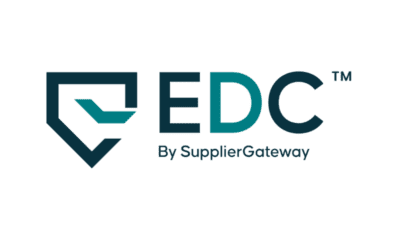You know how time-consuming and tedious supplier onboarding can be for hospitals and healthcare systems. According to the Institute for Supply Management, the average time for onboarding suppliers for large organizations is roughly six months; chances are your organization would find that amount of time for onboarding unacceptable.
With constant pressures to reduce costs and increase efficiencies, you need a streamlined process to get new vendors up and running as quickly as possible.
At the same time, you have to ensure you’re meeting all the necessary compliance and regulatory requirements. It’s a tricky balance, but follow these best practices and you’ll have a supplier onboarding process that’s optimized for success.
First, centralize and standardize the steps involved, from initial contact through contracting and beyond. Make use of automation where you can to reduce repetitive manual work. And most importantly, communicate frequently with your new vendors to make sure there are no surprises on either side. If done right, supplier onboarding doesn’t have to be a hassle – it can be an opportunity to build strong, long-term partnerships that benefit both parties. With the tips in this article, you’ll be onboarding new suppliers efficiently and effectively in no time.
The Importance of Vendor Onboarding for Hospitals
Vendor onboarding is key to optimizing your supply chain and ensuring high-quality patient care. As a hospital, you have a lot riding on choosing the right suppliers and properly onboarding them.
Streamline Processes
Well-designed onboarding processes reduce costs and increase efficiency. By automating paperwork and digitizing records, you’ll save time and money. Electronic portals where vendors can upload required documents and fill out information in a standardized format are ideal.
Mitigate Risks
Proper onboarding mitigates risks to patients, staff, and your organization. Checking credentials, certifications, and compliance helps avoid issues down the road. Be sure new vendors understand and agree to your hospital’s values, standards, and policies in writing. Conduct site visits when possible to evaluate operations in person.
Ensure Safety and Quality
Onboarding impacts patient safety, so scrutinize new vendors thoroughly. Review service histories, talk to references, and evaluate product or service quality. Once onboard, conduct periodic re-evaluations to make sure standards don’t slip. Patient well-being depends on the integrity of your supply chain.
Build Partnerships
A good onboarding process sets the foundation for a long and productive partnership. Take time to understand new vendors’ capabilities and limitations to find the right fit for your needs. Explain your hospital’s priorities and constraints as well so vendors know how to best support your mission. Open communication and transparency build trust in the relationship.
With mindful onboarding of valued partners, you’ll gain a secure, cost-effective, and high-quality supply chain—and provide the best care for your patients. Isn’t that the most important goal?
Steps for Streamlining Supplier Onboarding Processes
Streamlining your supplier onboarding process can save time, reduce costs, and get new vendors up and running as efficiently as possible. Here are some steps to optimize your hospital’s supplier onboarding:
- Assign a dedicated point person to manage the onboarding checklist for each new supplier. This helps ensure nothing falls through the cracks and provides the vendor with a single contact to guide them through the process.
- Automate whatever parts of the process you can. Things like online forms, e-signatures, and automated email reminders can speed up steps like contract signing, compliance documentation, and scheduling orientations.
- Create a clear communication plan. Meet with the key stakeholders early on to define objectives, priorities, and metrics for success. Put the plan in writing and share it with the new vendor so everyone is on the same page from the beginning.
- If onboarding happens in person, designate a physical space for the vendor to work during onboarding. Providing office space, a desk, and network access helps the vendor get up to speed and gives them a home base as they learn about your organization.
- Schedule a vendor orientation and initial training. Walking the vendor through your facilities, systems, and processes helps them integrate into your operations as smoothly as possible. Orientations should include key policies, contacts, and next steps.
With efficient planning and leveraging available technologies, streamlining your supplier onboarding is absolutely achievable. Following these best practices will ensure your new vendors get up to speed quickly so you can focus on what really matters – providing the best care for your patients.
Leveraging Technology to Automate Onboarding Tasks
Leveraging technology for supplier onboarding in hospitals is key to streamlining the process and reducing manual work for employees. Automating repetitive tasks frees up staff to focus on high-value work.
Utilize a Self-Service Onboarding Portal
Allowing vendors to fill in their own information when it’s most convenient for them saves your team from having to chase down documents or search the internet for any information that’s missing. Self-service portals also allow suppliers and vendors to update their information whenever anything changes, which means your supplier data is more accurate and useful. Onboarding portals like SupplierGateway’s portal can be customized to suit the various supplier types your hospital system utilizes, which means the onboarding experience is specific to the vendor type onboarding, making the process of filling out documentation much faster.
Automate Data Entry
To save suppliers even more time during the onboarding process, SupplierGateway’s Onboarding software can automatically populate electronic forms with information from the vendor profile. Fields like contact details, tax IDs, and payment terms only need to be entered once. The data is then synced across all relevant systems. This reduces duplicate data entry, saves your vendors time during onboarding, and ensures consistency across all your systems.
Digital Document Signing
Having suppliers physically sign multiple copies of agreements and send them back is time-consuming. Electronic signature solutions let you send documents for e-signature directly from your onboarding platform. Vendors can review and sign anywhere, speeding up the contract finalization process. Digitally signed documents are automatically filed in the appropriate systems.
Seamless Communication
Onboarding software enhances communication between departments by centralizing supplier information and documents in one place. Stakeholders from IT, finance, and legal have visibility into the onboarding progress and can pick up where others left off. Email notifications alert teams when it’s their turn to review and approve. This level of connectivity drives efficiency and reduces the time it takes to onboard new suppliers.
Increased Compliance
Automated workflows ensure all necessary steps are completed in the proper order. Checklists prompt teams with required approvals and documents at each stage of onboarding. Automated validations catch errors and incomplete information early on. By systemizing and standardizing processes, hospitals can onboard vendors compliantly and confidently.
Leveraging onboarding technology for hospitals reduces tedious work, mitigates errors, enhances compliance, and increases connectivity between teams. While initial investment may be needed, the long-term gains in productivity and efficiency make the business case for automation software quite compelling. The future of vendor onboarding is digital, automated, and optimized.
Building Strong Supplier Relationships Through Onboarding
Building strong relationships with your suppliers is key to optimizing the onboarding process. Foster open communication and set clear expectations from the start.
Meet Regularly
Schedule recurring meetings with vendors during onboarding and beyond. This allows you to address any questions or concerns, provide feedback, and make sure you’re both on the same page regarding the next steps. Meeting regularly, whether weekly or monthly, establishes a collaborative partnership and builds trust.
Share Key Documents
Provide vendors with any policies, procedures, or other materials they need to understand to properly onboard. This includes things like:
- Code of conduct
- Compliance documentation
- Standard operating procedures
- Key performance indicators or service level agreements
Supplying this information upfront eliminates confusion and helps vendors meet your requirements and key performance targets. Brief them on any changes to documents or processes as well.
Designate a Main Point of Contact
Assign a primary contact person for vendors to direct questions to during onboarding. This single point of contact allows for clear, consistent communication and helps vendors get the information they need in an efficient manner. The main contact should be thoroughly versed in the organization’s vendor management program and able to address any issues. Consider a backup contact as well in case the primary contact is unavailable.
Evaluate and Provide Feedback
Review vendor progress and performance regularly, especially in the initial onboarding period. Offer constructive feedback and suggestions for improvement. Be open to feedback from vendors as well on ways you can strengthen the relationship or improve your internal processes. Continuous evaluation and feedback helps to ensure vendors meet key milestones and make necessary adjustments. It also reinforces your commitment to partnership and collaboration.
Maintaining open lines of communication, providing the resources and information vendors need, designating key contacts, and giving constructive feedback are best practices for developing valuable, long-term relationships with suppliers. Strong partnerships built on mutual understanding and trust will optimize the onboarding experience for both parties.
Measuring and Improving Onboarding Programs Over Time
Once you have an onboarding program in place, you need to determine whether it’s achieving the desired results. Measuring key metrics over time can help assess the effectiveness of your onboarding and identify areas for improvement.
Time to Complete Onboarding
Track how long it takes vendors to become fully onboarded. If it’s taking longer than expected, your onboarding may need strengthening. Consider further segmenting your supplier types to tailor the onboarding experience more explicitly, and increase communication via check-ins with the supplier during the onboarding process.
Feedback and Surveys
Survey new vendors at 30, 60, and 90 days to get their input on the onboarding experience. Ask how long it took them to complete the process, what could be improved, and their level of satisfaction. Look for trends in the feedback and make adjustments to your program.
Continuous Improvement
Review metrics and feedback regularly and update your onboarding program every 6-12 months. Keep what’s working, and revise or replace what’s not. Onboarding should be an evolving process that adapts to changes according to your organization’s needs as well as your vendor’s needs. With ongoing measurement and refinement, you can optimize your program to achieve maximum results.
Conclusion
By focusing on streamlining your onboarding workflows, providing thorough training, maintaining open communication, and building solid relationships, you’ll be well on your way to mitigating risks, reducing costs, and improving patient care through high-quality vendor partnerships.
The time you invest upfront in onboarding new suppliers will pay off hugely down the road. While change can be challenging, viewing suppliers as collaborators in care will help make the transition as seamless as possible. Keep at it and before you know it, you’ll have built a network of trusted partners helping your hospital operate at its best. The patients and community you serve will reap the benefits.












